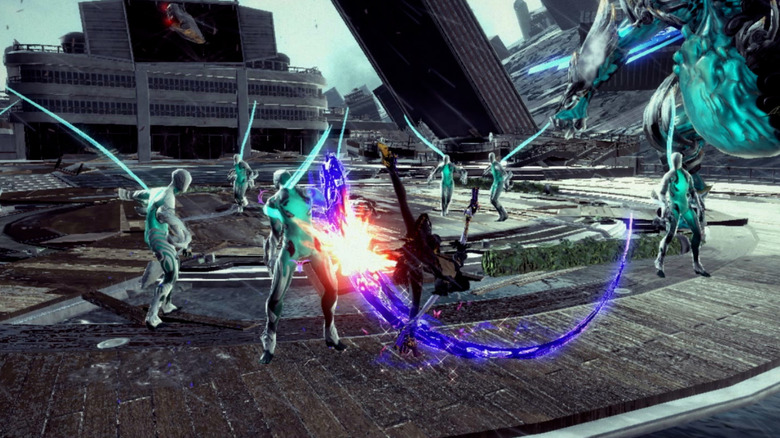Bayonetta 3: How To Turn On Naive Angel Mode To Cut Down The Violence
The newest entry in the modern fantasy, hack-and-slash series is finally arriving with the release of "Bayonetta 3." The titular witch returns with some new moves and friends, but the same over-the-top action and, shall we say, adult style. The series has never been afraid to display a little skin and more than a little blood, and this latest title promises to be no exception.
For some, this is part of the appeal of the series, but for others, it could be a drawback or even a deal breaker. Fortunately for those individuals, for the first time, this sequel is introducing a new, family-friendly mode that raised eyebrows when it was announced. Known as Naive Angel mode, it allows players to reduce the violence and keep Bayonetta's clothes on while still getting to experience all the fun of the gameplay.
This mode should be a welcome addition for some and expand the player base without changing anything for those who like the series as it is. For those who do want to enjoy the game with a little less mature content, turning on Naive Angel mode is a simple procedure that just requires knowing where to look in the game's menu.
Switch Naive Angel mode on and off from the menu between chapters
Anyone who wants to play a more family-friendly version of the lengthy "Bayonetta 3" simply needs to turn Naive Angel mode on from the menu. Turning it on will limit the more mature elements of the game while turning it off will restore it to the original experience. However, it's important to note that this can't be done at just any time in the game.
Naive Angel mode can only be turned on or off from the main menu or chapter menu of the game. This means it can only be activated when the game is first fired up or between chapters. If a player starts the game and decides they want less skin and gore, they'll need to quit out to the main menu, switch on Naive Angel, and then start over from the beginning of the chapter.
This means that using the mode will require a little planning and forethought. Quickly switching it on when the kids (or parents) walk into the room won't be possible. It will be necessary to know in advance what kind of experience one is looking for. Given this caveat, however, this should be a helpful tool for those who want to play in the family room without worrying about who might interrupt.


